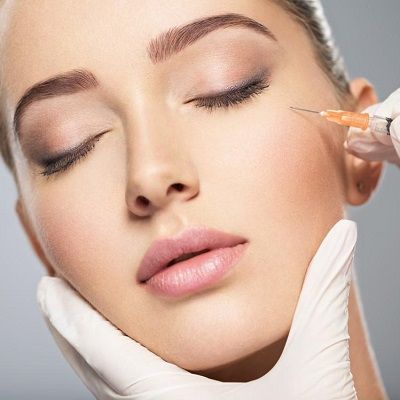In the world of aesthetic enhancements, dermal fillers have undergone a remarkable evolution. Once a niche area of cosmetic treatment, dermal fillers have become a cornerstone of modern non-surgical rejuvenation. This progression reflects not only advancements in technology but also shifts in societal beauty standards. For those seeking top-tier dermal filler treatments, exploring options like the Dermal Fillers Injections Clinic in Muscat can offer insights into the current state of this transformative field.

The Origins of Dermal Fillers
Early Beginnings
Dermal fillers have a rich history that dates back to the early 20th century. The initial attempts at facial augmentation were crude and involved materials like paraffin wax and silicone. These early methods often led to complications and were considered experimental at best.
The Advent of Collagen Fillers
The real breakthrough came in the 1980s with the introduction of collagen-based fillers. These products revolutionized the field by offering a more natural-looking solution for volume loss and wrinkles. Collagen, being a naturally occurring protein in the skin, provided a more harmonious integration with the body, reducing the risk of adverse reactions.
The Rise of Hyaluronic Acid
Introduction of Hyaluronic Acid Fillers
In the late 1990s, hyaluronic acid (HA) emerged as a game-changer in dermal filler technology. Unlike its predecessors, HA fillers offered temporary but highly effective results with minimal risk of allergic reactions. Hyaluronic acid is a naturally occurring substance in the body that retains moisture and adds volume, making it an ideal choice for cosmetic enhancements.
Benefits of Hyaluronic Acid Fillers
Hyaluronic acid fillers became popular for their ability to create a natural and youthful appearance. They provided several advantages over older fillers, including:
- Biocompatibility: HA is well-tolerated by the body, reducing the likelihood of complications.
- Reversibility: The effects of HA fillers can be reversed with an enzyme called hyaluronidase, offering flexibility in treatment outcomes.
- Customization: HA fillers come in various formulations, allowing for tailored treatments to address different aesthetic concerns.
Advanced Techniques and Innovations
The Emergence of New Fillers
The 2000s witnessed the development of new and improved filler materials. These included fillers made from calcium hydroxylapatite, poly-L-lactic acid, and other innovative substances. These advancements offered longer-lasting results and enhanced the ability to address deeper wrinkles and facial volume loss.
Customized Treatments
The evolution of dermal fillers has also led to more personalized treatment plans. Clinics, such as the Dermal Fillers Injections Clinic in Muscat, offer advanced assessment tools and techniques to customize treatments based on individual patient needs. This personalization ensures optimal results and minimizes risks.
Trends in Dermal Filler Applications
Non-Surgical Facelifts
One of the most significant trends in recent years is the use of dermal fillers for non-surgical facelifts. These procedures involve using fillers to lift and contour the face without the need for invasive surgery. Techniques such as the "liquid facelift" have gained popularity for their immediate and natural-looking results.
Combining Fillers with Other Treatments
Dermal fillers are increasingly being combined with other non-surgical treatments to enhance overall results. For example, combining fillers with neurotoxins like Botox can address both volume loss and muscle-related wrinkles. This integrative approach provides a comprehensive solution for facial rejuvenation.
Safety and Regulatory Advances
Improved Safety Protocols
As dermal fillers have evolved, so have safety protocols. Modern fillers are subject to rigorous testing and regulatory standards to ensure their safety and efficacy. Clinics like the Dermal Fillers Injections Clinic in Muscat adhere to these stringent standards, providing clients with peace of mind regarding their treatments.
Addressing Complications
Although dermal fillers are generally safe, potential complications can occur. Advances in techniques and materials have improved the management of such issues. For instance, the development of reversal agents and improved injection methods has made it easier to address and correct any adverse effects promptly.
The Future of Dermal Fillers
Emerging Technologies
The future of dermal fillers is poised for even more exciting developments. Research is ongoing into new materials and technologies that promise enhanced results and greater safety. Innovations such as bio-stimulatory fillers, which stimulate the body's own collagen production, are on the horizon.
Expanding Applications
Dermal fillers are also being explored for new applications beyond traditional facial treatments. For instance, they are being used in areas like hand rejuvenation and body contouring. As techniques advance, the versatility of dermal fillers is expected to expand further.
Conclusion
The evolution of dermal fillers reflects a dynamic interplay between technological advancements and changing beauty standards. From the early days of experimental treatments to the sophisticated solutions available today, dermal fillers have come a long way. Clinics such as the Dermal Fillers Injections Clinic in Muscat exemplify the cutting-edge approaches in the field, offering clients access to the latest innovations and highest standards of care. As the industry continues to evolve, dermal fillers remain at the forefront of non-surgical aesthetic enhancements, promising even more exciting developments in the future.
